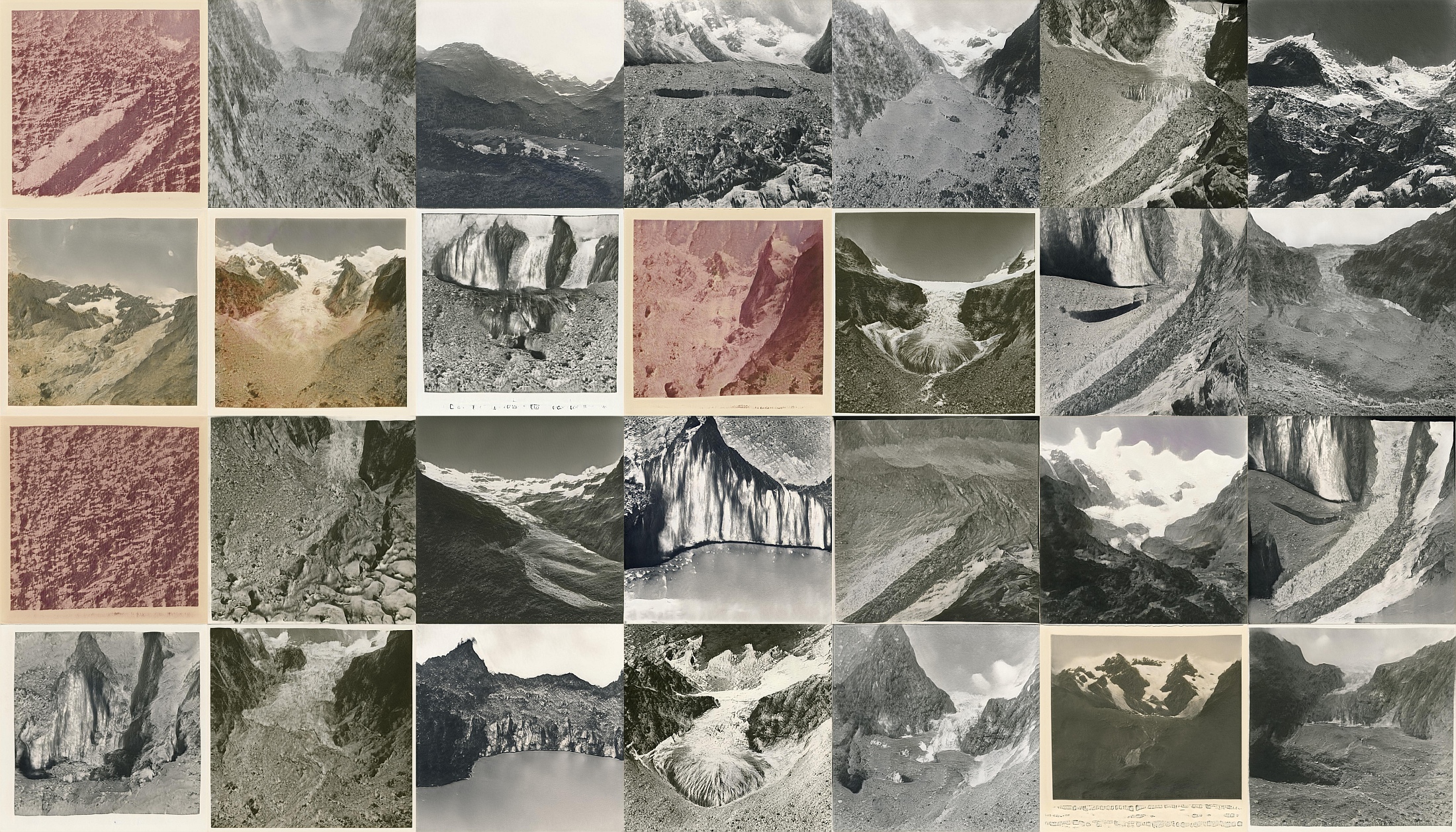What can fluvial systems and glaciers tell us about climate change? And how can we measure the human impact on these complex water networks? During her residency at Cittadellarte – Fondazione Pistoletto, Berlin-based artist Theresa Schubert investigated the fluvial systems in the Piemont area in North-West Italy. Currently, Schubert is developing a video work consisting of fictional images of glaciers created by an AI system, using historical fieldnotes of the Italian glaciologist and geologist Ardito Desio and archival photographs from the 19th and 20th century.
The importance of water
The complex physical networks of fluvial systems embody the environmental impact of human activity. Composed of many different species, organic and inorganic materials, fluvial systems contain human byproducts and pollution. Schubert travelled to the Piemont area to look at these complex systems in detail and stayed in a former textile factory close to the stream Cervo. The presence of industry – an important economic factor – marks the landscape, as seen by the former factories of the textile industry and the current rice agriculture, which relies on lots of water. “The first research phase was an intense period of knowledge-input, by meeting new people, learning about their research and expertise to better understand the importance of water in the region.”
During the developmental phase of her residency in March, Schubert visited the archives of the Italian Glaciological Committee and the Sella Foundation in Turin. The archival collections house the earliest photographs and maps of glaciers of the Italian Alps. Browsing through the archives, she encountered the collection of handwritten fieldnotes from the Italian glaciologist and geologist Ardito Desio, dating from 1920 until 1950, which form the basis of the work she is developing.
The disappearance – the melting – of glaciers is one of the most well-known phenomena that show us the impact of climate change. “This is something that interested me, because glaciers hold information and memories from the past. They hold information about air and rain pollution, radiation, and remnants of organic material, such as bones and skeletons. With them gone, a lot of the memories of our earth will be gone.”
Thinking-with glaciers
Schubert is currently translating the handwritten writings of the notebooks, consisting of sketches and reports from Ardito Desio’s observations in the mountains. “I was interested to read his language of how he described nature at that time. You will not find these poetic and sentimental descriptions of nature in scientific publications.” The idea is to reconstruct the poetic narrative of nature by a machine learning program. The descriptions will be fed into a machine learning model that translates text to imagery. Schubert is recording the training process of the program, so with each iteration of an image, the model tries to match the description better. “What will come out of it, is a completely synthetic landscape that does not exist. The video could be seen like a machine dream from the future trying to imagine what glaciers looked like.”
Text: Nadeche Remst



